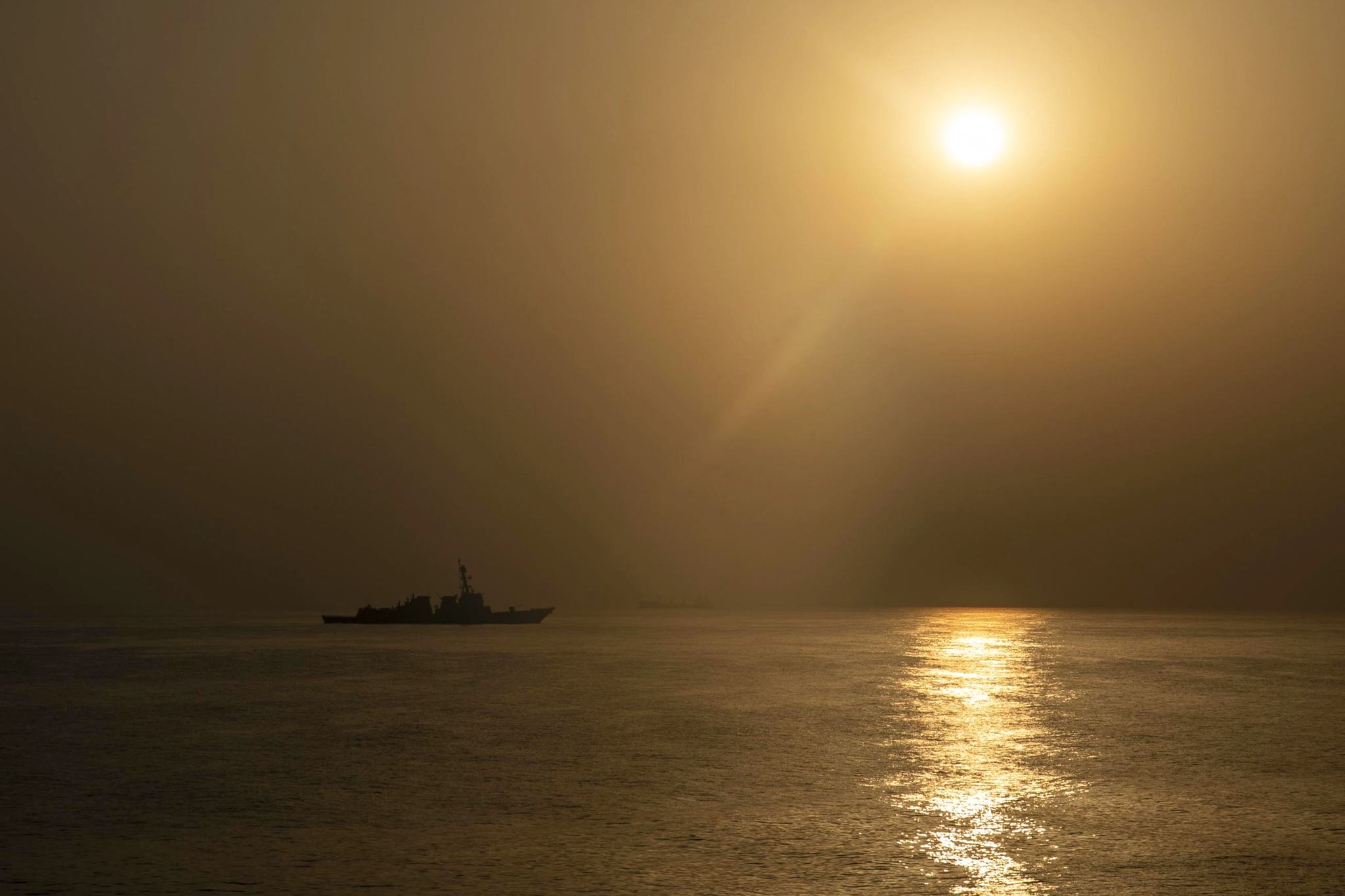
The Explosive Rise of WBIED’s
Incident: Multiple Attacks Reported Against a Vessel in the Southern Red Sea (Armed Security Team destroys a WBIED)
Date: 08 August 2024 at 1700 UTC
Location: Approximately 45nm south of Al Mukha in the Bab el Mandeb Strait: 12° 32’N 043° 27’E
Incident Details – UKMTO has released details of a complex incident involving an attack on a vessel by the Houthi, initially, in the Bab el Mandeb Strait. The incident report (a) stated the Master reported being attacked by 2 small craft, white and black in colour which resulted in an RPG exploding close to the vessel. At 2245 UTC (b), the same ship was attacked by a missile that exploded close to the ship. At 0340 UTC 09 Aug, the ship was targeted by an Uncrewed Surface Vessel (USV) also known as a Water Borne Improvised Explosive Device (WBIED). The ship’s Armed Security Team (AST) fired upon the USV, which then exploded a distance from the vessel. The vessel reported a fourth attack at 0557UTC when a missile splashed into the sea close to the ship’s side. The crew and vessel are reported to be safe and are proceeding to the next port of call.
Unconfirmed reports state the vessel attacked was the Liberian-flagged Tanker, DELTA BLUE, it is not clear at this point if the ship was specifically targeted due to its ownership or trading connections. The intensity of this prolonged attack would indicate the vessel is likely to have affiliation to Israel whether by ownership or recent trading activity. The presence of an AST and the destruction of the incoming USV prove the value of having armed security embarked to mitigate against some of the threats faced in this region. This is the second USV destroyed by an AST in the last month.
Why are WBIED’s so dangerous?
The threat of Water-borne Improvised Explosive Devices (WBIEDs) has become a major issue for seafarers due to rising conflict and instability around key maritime choke points. Various nations and non-state actors, with differing goals, have increased the risk of attacks on shipping or attempts to close shipping channels. Non-state actors, in particular, make WBIEDs a serious threat because these devices are easier and cheaper to make and use compared to conventional weapons.
The most likely areas for these attacks are the Bab-el-Mandeb straits, between the Gulf of Aden and the Red Sea, and the Straits of Hormuz, the narrowest point between the Persian Gulf and the Indian Ocean. Recent use has been seen on a global scale, specifically by Houthi Rebels targeting commercial shipping in the Red Sea, and by Ukraine targeting Russian Warships in the Black Sea.
Tactical Advantages
The use of drone boats provides several tactical advantages over traditional drone or ballistic missile attacks. Unlike missiles that may cause damage or fires above the ship’s waterline, drone boats can breach the hull at or below the waterline, increasing the likelihood of sinking the vessel. Drone Boats also provide a cheap alternative to anti-ship cruise missiles designed to sink warships.
Historical Context
This isn’t the first time the Houthis have employed such tactics. The group previously pioneered the combat use of unmanned explosive boats in 2017 when they struck a Saudi vessel. Historically, similar tactics have been used in warfare; during the Second World War, Imperial Japan deployed manned explosive boats called Shinyo against US ships. Insurgent and terror groups, including Al Qaeda, Sri Lanka’s Tamil Tigers, and Hamas, have also utilized manned explosive boats in various conflicts.
Ongoing Threats and Countermeasures
The Red Sea, a critical transit point for about 12% of global trade, has seen a rise in such threats. The UKMTO has issued guidelines for ships in the area, referring to these drone boats as Water Borne Improvised Explosive Devices (WBIEDs). The UKMTO advises that WBIED attacks could breach a ship’s hull and recommends using a safe muster point below the waterline when such threats are anticipated.
To mitigate these threats, the US, UK, and other nations have successfully intercepted many drones and bombed their launching sites. However, once launched, these vessels pose a severe threat, particularly to commercial ships that lack advanced optical detection systems available on military ships.
Broader Implications
The use of explosive drone boats has significant implications for both commercial and naval vessels. The Black Sea conflict has seen extensive use of these weapons, with Ukraine successfully deploying them against Russian warships. This conflict has led to further innovation, including drone boats capable of launching rockets, missiles, and even carrying anti-aircraft systems.
Developing countermeasures, especially for nighttime attacks, remains a priority. In some cases, countries have resorted to using netting around ports to protect against these threats. The challenge is compounded in rough seas, where drone boats are difficult to detect both visually and via radar due to the “clutter” created by moving waves.
As the use of unmanned explosive boats becomes more prevalent, enhanced detection and countermeasure strategies will be critical in safeguarding commercial and naval vessels navigating these dangerous waters. If your concerned about the risks to your vessel, or require further information, contact us at enquiries@priavosecurity.com.
